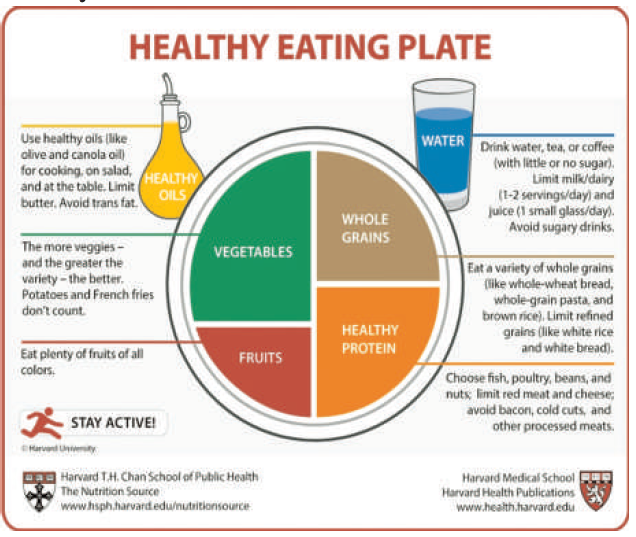A BALANCED PLATTER

Dr. Sonam Rajput
Children spend a large part of the day in school. The school-age period between 6 and 11 years is one in which children develop both physically and mentally.
During this period, children create their own identity and want to direct their own nutrition. It is very difficult for individuals who do not acquire the right habits during childhood to get rid of poor habits later in their life. Thus, implementing a proper course of nutrition education for school-age children is key in securing healthy habits during the early school-age period as children spend a large part of the day in school.
Various strategies can be performed in schools by teachers to motivate children about good nutrition:
Farm to School
Farm-to-school programs vary in each school or district, but often include one or more of the following strategies:
Purchasing and serving local or regionally produced foods in the school meal programs.
4Educating students about agriculture, food, health, and nutrition.
4Engaging students in hands-on learning opportunities through gardening and farm field trips
4Visit food locations: A wonderful method of teaching children about different foodstuffs is to take food excursions. This can simply be a visit to the local supermarket, bakers or butchers. Farm trips are a fantastic day out, with activities such as watching cows being milked or eggs collected sparking great topics of conversation, such as how yogurt is made and the all-important subject of animal welfare.
School Gardens
School garden programs can increase students’ nutrition knowledge, willingness to try fruit and vegetables, and positive attitudes about fruits and vegetables. School gardens vary in size and purpose. Schools may have window sill gardens, raised beds, greenhouses, or planted fields.
Students can prepare the soil for the garden, plant seeds, harvest the fruits and vegetables, and taste the food from the garden. Produce from school gardens can be incorporated into school meals or taste tests.
In the Cafeteria
Students receive meals, snacks, and drinks from cafeterias, vending machines, and stores thousands of times during their K-12 years Cafeterias are learning labs where students are exposed to new foods through the school meal program, see what balanced meals look like, and may be encouraged to try new foods through verbal prompts from school nutrition staff or taste tests. Cafeterias may also be decorated with nutrition promotion posters or student artwork promoting healthy eating.
Play Healthy Foods Bingo
For students in kindergarten through fifth grade, the Healthy Foods Bingo game is a great way for children to learn about correct portion sizes look like. Simple make your own bingo cards using the USDA’s MyPlate and read out the correct portion size of the food you call out.
Engage students with cooking projects
When it is time to learn about nutrition, teachers should add some creative or interesting projects to help improve understanding and provide student engagement. Cooking projects can make the lesson interesting and exciting for children.
Encouraging students to take an active role in the kitchen and nutritional decisions can start in the classroom. Teachers can set up one or two class projects that focus on cooking a vegetable or following a recipe that uses whole grains and vegetables to stress the importance of selecting nutritious foods. The project will keep the class engaged and will encourage students to get more active in the kitchen at home.
Sing-a-song-of-food: Singing is fantastic method by which to teach important messages. When it comes to nutrition there’s loads to choose from, such as Hot Potato or Fruit Salad by The Wiggles. Dancing to foodie songs is also a great choice – get them to use their imagination as they make up dances about certain food groups, such as veggies and fruit.
Food tasting: Trying different foods as part of a game is ideal, as it’s not being associated as a meal that ‘has’ to be eaten. Discuss colour, smell and texture, as well as getting your child to consider how much this can change with different cooking and preparation methods.
Do the food alphabet: A great dual-aspect learning game – ask the child to cut out pictures of various foods that they recognise and match them to the letters of the alphabet.
Utilise age-specific nutrition books: Such as Jasper McFlea Would Not Eat His Tea (Lee Fox and Mitch Vane) and Monsters Don’t Eat Broccoli (Jean Barbara Hicks).
Grow your own: You don’t need to start a full-blown veggie garden, but a few pots can be a great method to bring food fun into the equation. Growing your own tomatoes or carrots is an slow-burn adventure that’s fascinating for all involved. Add in a further element with age-specific gardening books, such as Growing Vegetable Soup (Lois Ehlert), and you’ll be instilling an all-important curiosity that will hopefully lead to a lifelong interest in creating tasty, healthy, home-cooked meals.
Other activities like :
4Counting with pictures of fruits and vegetables.
4Learning fractions by measuring ingredients for a recipe.
4Learning about cultural food traditions
Finally what should be a Balanced Diet
